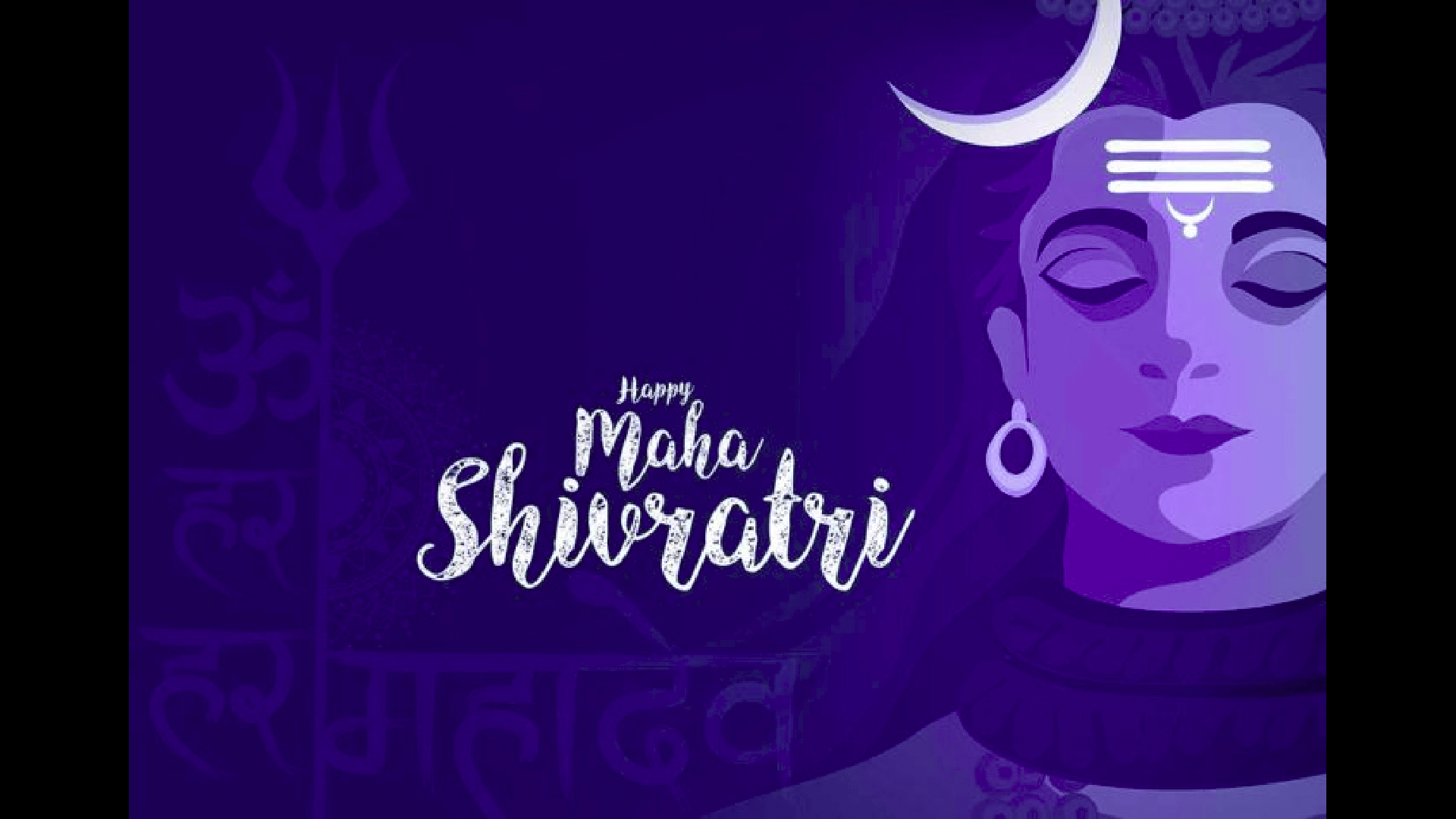Maha Shivratri

Mahashivratri is celebrated by Hindus all over the world with great enthusiasm. It is celebrated on the Falgun Krishna Chaturdashi, the fourteenth day of the month of Falgun( The last month in Hindu lunar calendar). Mahashivratri as the name indicates, is the great night of Shiva. It is believed to be the day of the union of Shiva and Shakti. The planetary position on this night is such that there is a powerful natural upsurge of energy in the human system. While there is a shivratri in every month of hindu calander, only the one occouring on 13th night - 14th day of waning moon in the month of falgun is celebrated as maha-shivratri. Astronomically, it is the darkest night of the year.
Shiva is the most powerful god. He is worshiped in the form of a ‘Lingam’. As per the Hindu Mythology, It was on this day Lord Shiva appeared as a Jyotirlinga to resolve a dispute between Lord Brahma and Lord Vishnu. The devotees visit temples and observe fast on this day. In the northern states of India, the devotees visit River Ganga.They carry a special basket made with bamboo which is decorated with coloured paper, flowers and bells. This basket, called ‘Kanwar’(Kānwar), is used to bring Gangajal for the ‘Jalabhishek’ of the Shivling. Jalabhishek is a ritual where water is poured over the Lingam while chanting Mantras. Unlike majority of hindu festivals, Shivratri is a midnight festival, celebrated with “Jaagaran”, an all-night vigil and prayers, because Shaiva Hindus mark this night as “overcoming darkness and ignorance” in one’s life and the world through Shiva.
While Lord Vishnu is worshiped like a king and offered beautiful clothes, Jewellery and rich food made with milk and dry fruits, Shiva is a Yogi and stays away from worldly materials. He is offered bilva leaves and wildly grown flowers and fruits. His favorite fruit is Datura which is highly Poisonous if consumed irresponsibily, but has enough medicinal value.
Mahashivratri is celebrated as the day of marriage of Shiva and Parvati. Another common practice on this day is to read the chapter of ‘Shiv Vivah’ which is beautifully described by Goswami Tulsidas Ji in his famous work ‘Ramcharit Manas’. At many places the scene of Shiv Vivah is performed to commemorate this great event.
Mahashivratri is most significantly celebrated in Ujjain. Ujjain is one of the most ancient cities. It is known for the Mahakaleshwar temple. Here this festival is celebrated for Nine days. This is the only temple in the world where the marriage festival lasts so long and all the rituals of marriage from Haldi to Baarat are performed. During this festival Baba’s (Shiva is fondly called) supernatural make-up is done in a new form each day. The festival ends on the Mahashivratri day with the procession of Baarat and the marriage. Every year thousands of devotees across the world visit Ujjain to witness this ceremony.
Varanasi is another city associated with Lord Shiva Shiva resides here as Kashi Viswanath. Mahashivratri is celebrated here in an interesting way. It is a three-day celebration. The major attraction is the ‘Shiv barat’. Trained performers play the roles of Shiva, Parvati and other Gods and Goddesses and roam around the city and bless the people.
In the Rudraprayag District of Uttarakhand, there is a Triyuginarayan temple which claims to be the venue of the wedding of Shiva and Parvati. A special feature of the temple is the perpetual fire that burns in front of the temple. The flame is believed to burn from the time of the divine marriage.Thus, the temple is also known as Akhand Dhuni temple.
In Gujarat, There is a special mela organized near Mrugi Kund, near Junagadh. It is said that Shiva himself comes to bath in that kund.
In West Bengal, This festival is observed by unmarried girl seeking a suitable husband. This day, also marks enlightenment of Swami Dayanand Saraswati, who preached hinduism to be unbounded by material form. He formed Arya Samaj, practices praying by chanting mantras and performing havans, instead of blind Idol worshipping.
In Kashmiri Shaivism, Kashmiri hindus call it Herath word derived from sanskrit word hara-ratri ( Night of Hara ). They celebrate it on the 13th day of falgun in association of a fortnight long celebration for appearance of Bhairava (another name of shiva) as Jwala-Linga ( linga of flame ). It is regarded as most important festival by Kashmiri Pandits, who still celebrate it with some very ancient rituals like vatuk barun. Ancient rituals which have often been diluted, ignored or forgotten by rest of Central India.
On mahashivratri day, temples all over the country come alive with the sound of ‘Om Namah Shivaya’, and chanting the Maha Mrityunjaya mantras and performing the Rudrabhishek.
Mahashivratri is also celebrated in countries like Nepal, SriLanka, Indonesia and Mauritius which have been influenced by Indian culture. In Neal and Mauritius it is a National Holiday.